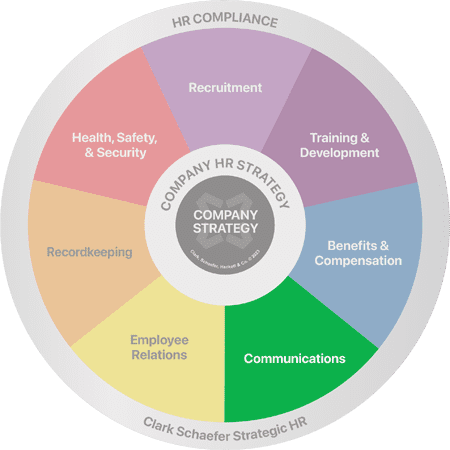Unleashing Employee Potential Through Competency-Based Job Descriptions
by Linda Gravett, PhD, SPHR
How many times have you heard statements like these from your employees?
“I have no idea what my official job duties are.”
“My job description mainly says ‘other duties as assigned’.”
“I’m evaluated on things that aren’t even in my job description.”
If you’ve heard these complaints much too often, perhaps the time is right for your organization to develop competency-based job descriptions.
A competency-based job description has one significant feature that traditional job descriptions do not possess. In addition to listing duties assigned to a position, the skills and behaviors required to successfully perform these duties is also included. This feature does the following:
- Enables recruiters to fully describe job requirements
- Helps supervisors adequately explain areas for improvement during reviews
- Lets employees understand skills they must acquire if they’re interested in other positions within the organization
Here’s how competency-based job descriptions are used on a practical basis:
Employees are often told that communication skills are important. Does that mean written, verbal, body language, or all of the above? An example of communications competency components that I’ve helped one of my clients identify is:
Communications
- Negotiating – dealing with others in order to reach an agreement or solution; for example, consensus building
- Persuading – dealing with others in order to influence them toward some action or point of view; for example, recommending an innovative solution to a problem
- Instructing – expanding knowledge or skills enhancement, in either a formal or informal setting
- Interviewing – conducting interviews directed toward some specific objective; for example, interviewing job applicants
- Routine Information Exchange – giving or receiving job-related information
- Public Speaking – making formal presentations before internal or external audiences
- Writing – writing and editing concise, clear letters, reports, articles, or e-mails
- Effective Listening – actively engaging in conversations in order to clearly understand others’ message and intent
Employees are often advised how important it is to be a “team player.” The supervisor may have a definition of a “team player” in mind that is vastly different from that of the direct reports he or she supervises. This was the case with another client who developed this set of statements to describe teamwork:
Teamwork and Collaboration
- Establishing Rapport – establishing and maintaining a good rapport and cooperative working relationship with all members of the organization
- Taking Initiative – showing flexibility in joining ad hoc teams and taking on extra responsibilities when required
- Choosing Communication Methods – effectively selecting the appropriate communication method to fit the situation
- Involving Others – involving coworkers and direct reports by sharing information through reports, meeting, or presentations
- Soliciting Input – asking for input from others through reports, meetings, or presentations
- Respecting Others – treating others with respect, regardless of position or function
- Influencing – using relationships to influence others to take risks for the good of the overall organization
- Facilitating Brainstorming – initiating brainstorming sessions when required to ensure that team members are invested in team activities and decisions
I don’t recommend that an organization use a “canned” approach toward developing competencies. Your organization’s Mission and Vision statements are the starting point to develop competency-based job descriptions. Why does your organization exist? How does your organization want to do business in three years? five years? What skills and behaviors must your employees have in order to successfully carry out the Mission and Vision? I advocate the company leadership taking time out to address these questions, with the input of Human Resources, to determine the unique set of competencies the organization requires.
I believe you’ll discover that a core set of competencies will be required organization wide. For example, one of my clients concluded that Communications, Teamwork and Collaboration, Research Skills, Innovation, Problem Solving, Coaching, Developing Goals and Objectives, and Leadership were all required to some degree. As an employee moves to the manager and executive level, the scope, impact, and level of sophistication increase. One size (job description) does not fit all.
For my clients that are now using competency-based job descriptions, there have been some clear advantages and some implementation challenges. The advantages are:
- Lower turnover because of better matches between applicants and jobs
- Less ambiguity during performance reviews because supervisors can provide more concrete examples of expectations
- More clarity about skill sets required for career development throughout the organization
Change is not easy to accept, even when the change will be beneficial to individuals and the organization. Some supervisors prefer room for subjectivity in hiring and promoting decisions. It’s so much easier to check a box for “Initiative” and “Dependability” than to think about specific behaviors and how those behaviors demonstrate competency. Those same supervisors, however, desire much more specificity when their review time rolls around!
I recommend that cross-functional, multi-level focus groups work together to develop the competency components – following the leadership’s articulation of the core competencies required for the organization to survive and thrive. I’ve found that this promotes buy-in and encourages employees to start developing a new language to describe how work gets done.
If you decide to move toward competency-based job descriptions, don’t forget to revise your performance reviews so they’re parallel. The competencies and their components on each individual’s job description should reappear on the performance review. Employees that I’ve talked with really appreciate the consistency!
Dr. Linda Gravett, PhD, SPHR is with Gravett & Associates (www.Gravett.com). If you have any questions or wish to share your comments with Linda, you can contact her at Linda@Gravett.com.


